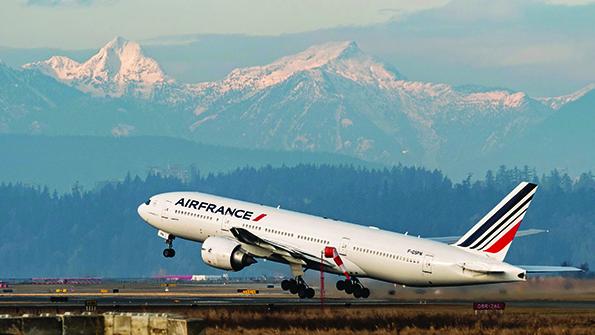Brussels Talks On Sustainable Aviation Fuel Targets Set To Restart

Air France is targeting use of 10% SAF by 2030.

As 2023 gets underway, the European landscape for sustainable aviation fuel, seen as the most realistic short-term way for airlines to cut emissions, is a little less clear than carriers and fuel producers would like—but talks set to restart soon in Brussels could change that.
Late last year, tripartite meetings among the European Commission, European Parliament and European Council—what the EU calls trilogues—resulted in agreement on revisions to the emissions trading system for aviation as part of the broader emissions-cutting Fit for 55 legislation package. However, discussions of ReFuelEU, the eagerly awaited legislation that would cover the region’s sustainable aviation fuel (SAF) mandates, ended without agreement.
- New Swedish EU presidency expected to prioritize finalizing of SAF-mandating legislation
- Trilogue talks should restart within coming weeks
- Airlines are aiming higher than proposed SAF targets
All of that took place during the previous EU presidency of the Czech Republic. Sweden, which has held the presidency since the new year began, is expected to want to resolve the ongoing question of ReFuelEU as quickly as possible.
The trilogue talks should start in the next few weeks, although a European Commission source says no exact date has been fixed.
Meanwhile, the proposed targets remain just that. Under the Fit for 55 legislation, the required percentage of SAF is set at 2% in 2025, 5% in 2030, 20% in 2035, 32% in 2040, 38% in 2045 and 63% in 2050. Within that, the proposed submandate for synthetic or e-fuels is 0.7% in 2030, 5% in 2035, 8% in 2040, 11% in 2045 and 28% in 2050. Legislators had discussed increasing the subtarget for synthetic fuels to 1% in 2030, 2% in 2033 and 5% in 2035.
Diverging views that stopped the parties from reaching agreement at the previous trilogue talks will need to be ironed out. One important question is whether synthetic fuels generated using nuclear energy should be included. The talks also touched on increasing the subtargets at the national level.
Timelines, deadlines and the targets themselves are on the agenda for the talks, and legislators must reach common ground before a final political agreement can be achieved. As the Swedish presidency sets out its priorities, lawmakers will need to take stock of where the talks ended late last year and how hard it will be to bridge the gap among the different institutions.
One thing is certain: Ongoing uncertainty will not help address the biggest SAF challenge, ramping up production.
“We urgently need to accelerate decarbonizing aviation, and governmental policy support like ReFuelEU is instrumental to creating the demand certainty needed to ramp up SAF production capacity,” says Jonathan Wood, vice president of renewable aviation for Europe at producer Neste, which is boosting its SAF output considerably. “Finalizing ReFuelEU will be an important lever to turning aviation’s ambitious emission-reduction goals into real action. It is crucial that an agreement on ReFuelEU is reached soon and that it gives clarity, certainty and predictability for fuel suppliers and investors—and the industry as a whole.”
Neste plans major investments to increase capacity and help it produce 1.5 million metric tons of SAF by year-end, up from around 100,000 metric tons in 2022 at its Porvoo refinery in Finland.
According to International Air Transport Association (IATA) calculations, at least 300 million liters (79 million gal.) of SAF were produced in 2022—triple the 2021 output—although more optimistic calculations put last year’s total production at as much as 450 million liters.
SAF is set to account for about 65% of CO2 abatement in the industry through 2050—and for that to happen, 450 billion liters of SAF would be needed, according to IATA.
The good news is that many major airlines are already targeting SAF at levels that go beyond that. For instance, Air France has set a target of 10% SAF use by 2030 as part of its Air France ACT sustainability program.
Coming to an agreement on the ReFuelEU mandates would be an important first step in providing visibility and encouraging producers to invest in SAF facilities, but the industry contends that more needs to be done, mirroring incentives to boost production in the U.S. market.
“We need a policy framework that supports greater production,” IATA Director General Willie Walsh says. “We need governments to provide the right financial incentives for the production of SAF.”
Editor's note: This article was updated to clarify the EU's nomenclature for the tripartite talks among the European Commission, European Parliament and European Council.





